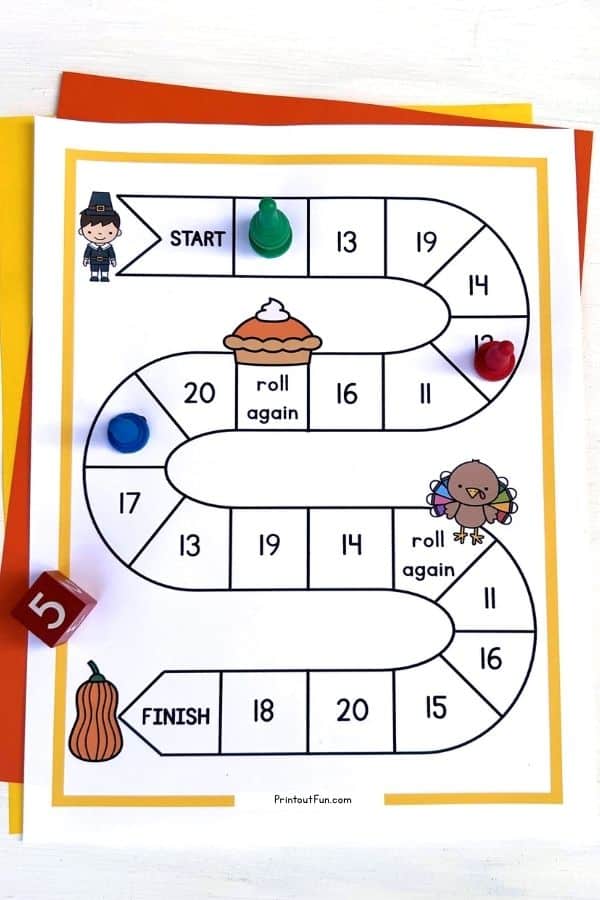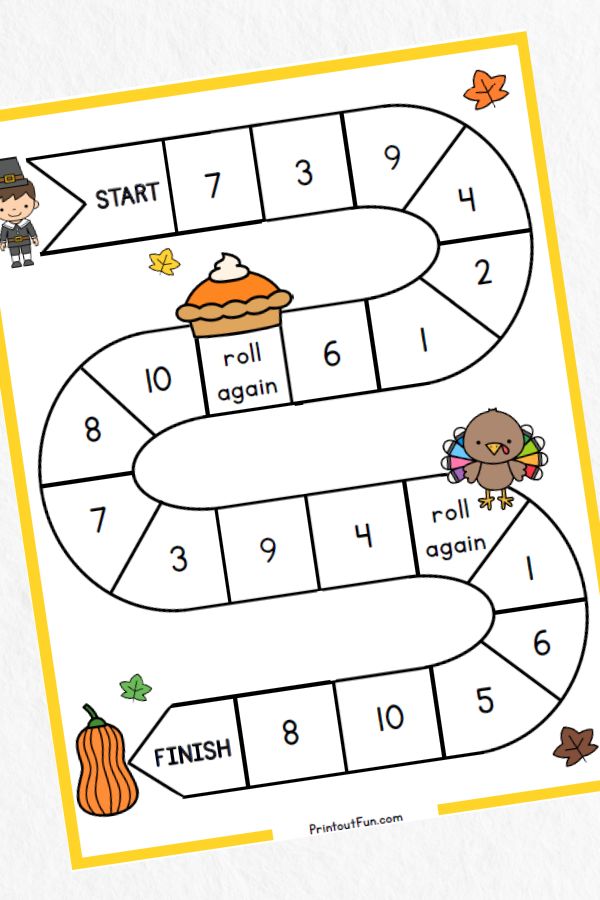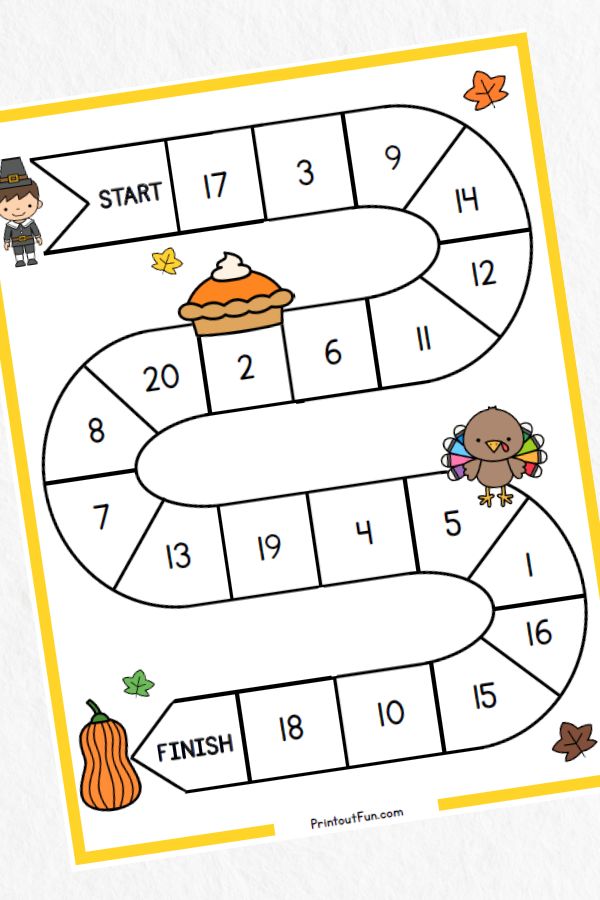Get ready for a festive adventure with numbers! These Thanksgiving number recognition games are an engaging way to help young learners master numerals 1 through 20. Whether you’re planning a holiday-themed math center or simply adding some seasonal fun to your lessons, this activity is sure to be a blast!

How to Play the Turkey Number Recognition Game
This board game is best enjoyed with small groups of 2–4 players, making it a great fit for classroom centers, homeschool pods, and small groups. If you’re working with a larger number of students, just print multiple copies of the game board so everyone can participate.
You can laminate these or use write and wipe pockets for durability, but it’s really unnecessary, especially if you are printing on thick cardstock. With so many fun game themes to choose from, you can even just print another next season!
To set up, place a game pawn or small token on the start space for each player. Decide who goes first with a fun little contest—try having everyone gobble like a turkey and vote for the most realistic one, or simply roll a die and let the student with the highest number start.
On each turn, a player rolls a regular six-sided die and moves forward that many spaces. After landing on a number, they say it out loud. This reinforces number identification in a way that feels more like play than practice. Children who are still developing verbal skills can point to matching cards or use assistive technology like talking buttons.
The game can be played competitively, where the first player to reach the finish line is the winner, or cooperatively, where everyone cheers each other on until all players complete the board. Letting everyone finish is often best for mixed-ability groups.

What You’ll Need to Play
(Affiliate links will be located throughout the remainder of the article.)
- Printed turkey number recognition game board(s) (down below)
- One game pawn per player (These Thanksgiving minis work great!)
- One six-sided die
- Laminator or page protectors (optional for durability)
- Talking buttons, AAC devices, or number flash cards for non-verbal players (if needed)
Adapting for Different Learners
These game boards come in several variations to match the different needs of your students. Use the 1–10 board for beginners, the 11–20 board for students ready to stretch their skills, or the full 1–20 version for advanced learners.
Students with fine motor difficulties may need to use adapted game pawns that are easier to grasp. You can also use ring-style pawns that slip onto the end of a child’s finger and eliminate the need for grasping.
For learners who rely on eye-gaze or speech-generating devices, these simple number cards work well with hook-and-loop dots.
No matter how you use them, these Thanksgiving number recognition games are sure to become a quick classroom favorite!

More Thanksgiving Fun
Check out our collection of seasonal math games to keep your learners engaged all year long—from pumpkins and snowmen to rainbows and sunshine. Learning numbers has never been more fun—or festive!


